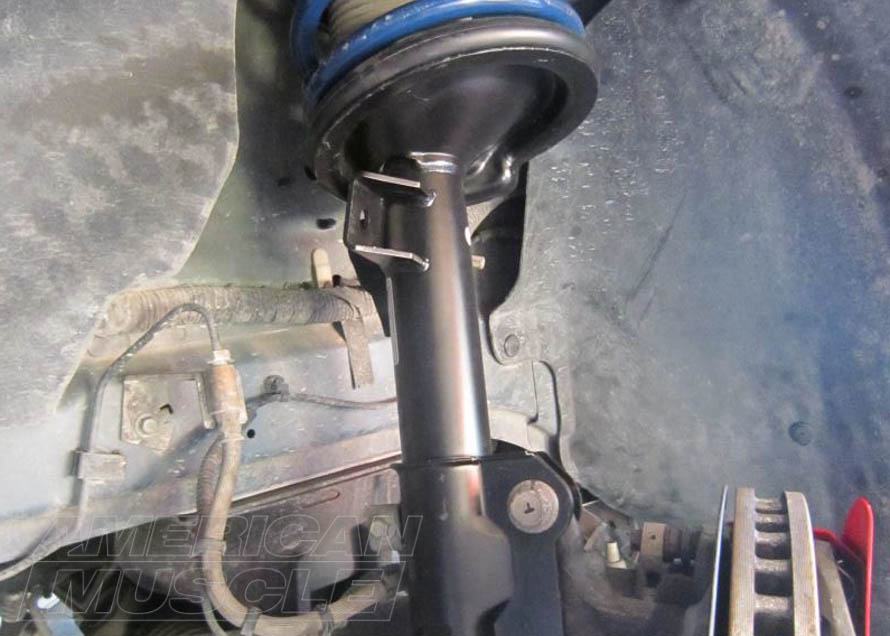A critical component of any vehicle are the shock absorbers or dampers. These are arguably the most influential element of ride quality and handling. Their job is to control the movement of the vehicle as it travels over surfaces and around corners as well as under braking and acceleration. Aftermarket offerings for the Mustang include non-adjustable, single-adjustable, and double-adjustable. Shocks and struts also hold your Mustang up and help it to turn in. The shocks are in the rear and the struts are in the front of your Mustang, and they are encased by your Mustang’s springs. When you lower your Mustang with a set of springs, you will want to consider upgrading the shocks and struts as well to maintain a balance throughout the vehicle. Going to a set of aftermarket shocks and struts will make you feel those little bumps in the road a bit more, but they will also drastically improve your handling and weight transfer throughout the vehicle.
Single-adjustable shocks will allow you to adjust the valving to suit your driving style and road/track conditions. Some units control only rebound while others control compression and rebound with one single dial. A double-adjustable shock/strut is the ultimate in adjustability allowing for fine-tuning of the compression and rebound curves separately to suit any combination of suspension upgrades. Upgrading your Mustang’s shocks/struts will:
- Improve tire to road contact
- Improve control in cornering, acceleration, braking, and quick steering input
- Adjustable shocks allow a tailored driving experience
When adding a lowering spring, it is often recommended you pair it with a performance shock/strut designed to work with the shorter travel and firmer rate of the spring. Look for companies who offer complementary kits which include both springs and shocks for a very effective suspension upgrade. As spring rates and ride heights change, so does the dampening needed from the shocks and struts. The springs' job is to support the vehicle while the shocks and struts control the rebound of the spring, preventing the ride from being too bouncy and handling poorly. So the strength of the spring will dictate the action required from the shocks and struts. You can also change the shocks and struts while keeping the same springs, to control how the suspension reacts and handles, should you desire to have either a slightly looser or firmer feel.
Aftermarket struts (and shocks) are always recommended when lowering a Mustang. As we've mentioned, the stock struts were designed for the stock spring specs. As a result, they are not intended to be used under lowered conditions. While they most certainly can work under lowered conditions, it is not optimal. This will lead to quicker failure and replacement of the struts. This also applies to rear shocks.


